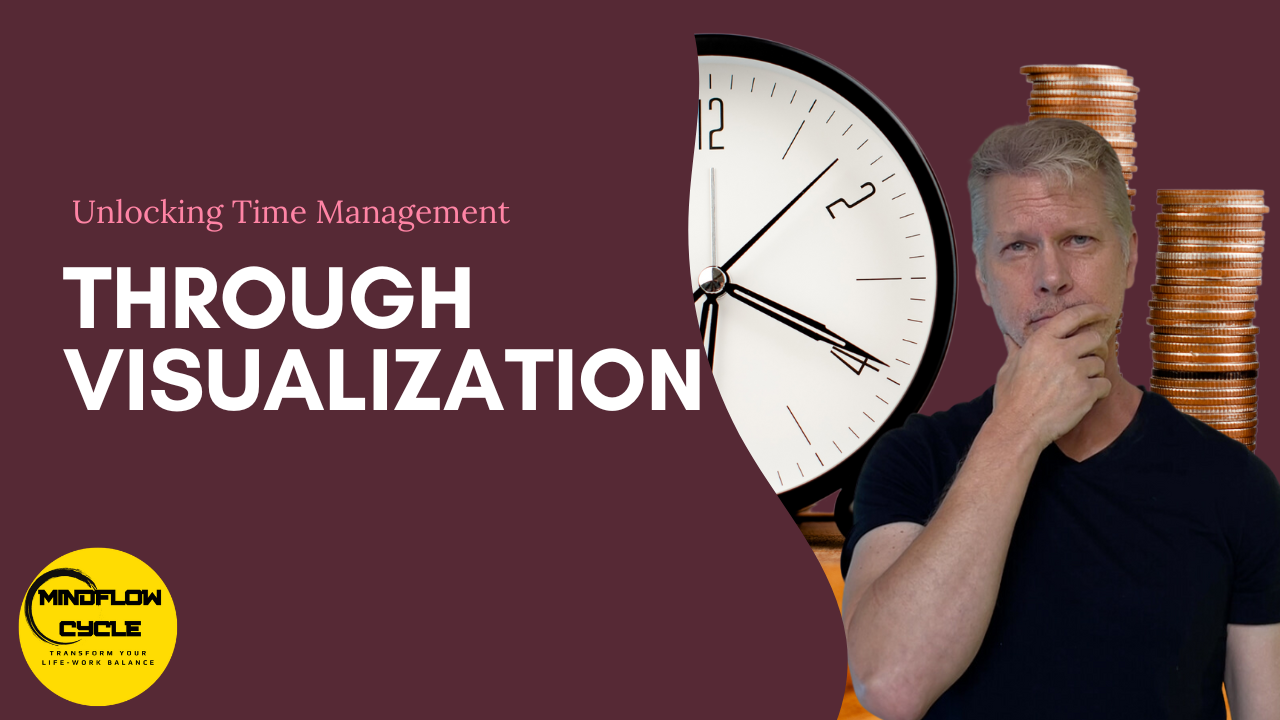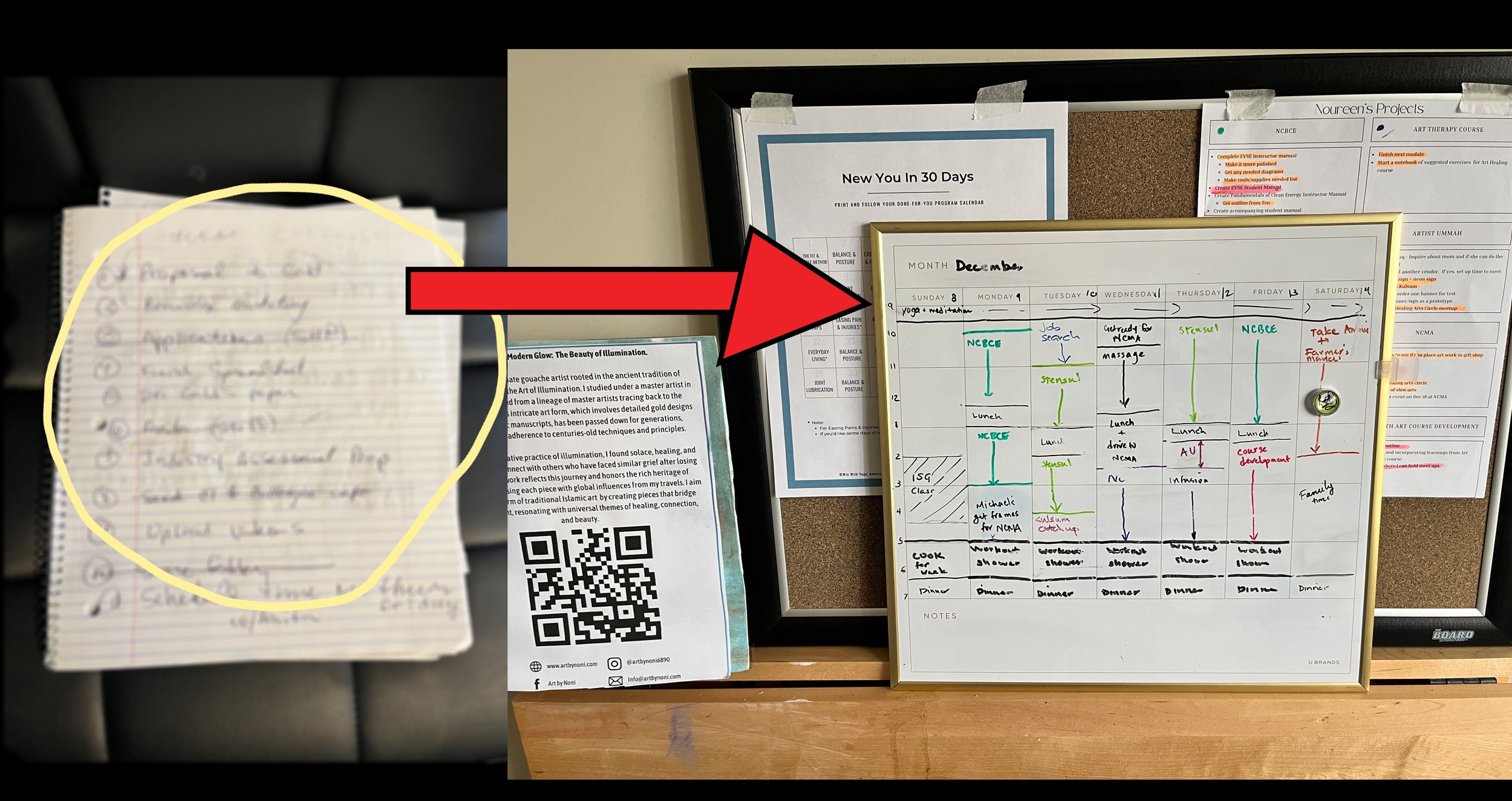
Video Resources for You!
Videos to help with productivity, mindset, time management and leadership.

Don’t invest in learning if you’re not willing to change your mindset.
If your mind is crowded with negativity or overthinking due to stress, you will never learn. Nothing will stick. Rid your mind of the noise and learning will happen!

The Nail in the Porch: When Success Becomes a Trap
We howl. We complain. We post. We vent. We talk to our coach, our therapist, our friends. But we don’t move.
Why? Because the pain’s uncomfortable—but not enough.
The job is draining, but it pays well.
The business is burning us out, but it’s our business.
The life looks shiny on paper, so who are we to want more?
Comfort becomes the trap. Not because we’re lazy—but because we’ve convinced ourselves that moving would be worse than staying stuck.

The Little Things That Create Big Wins: 10 Small Actions to Elevate Your Team’s Performance
If you want to improve your team’s performance, don’t look for sweeping changes or grand transformations. Instead, focus on the small habits and micro-actions that drive long-term success. Here are ten seemingly small but powerful shifts you can implement immediately to create a stronger, more productive, and more engaged team.

Unlocking Time Management Through Visualization: A Practical Guide for Executives
Visualization isn’t just about managing time—it’s about managing yourself. By aligning your actions with your intentions, you can turn chaotic days into structured, productive ones. And as you build this habit, you’ll likely notice a shift in more than just your schedule. Your confidence will grow, your stress will decrease, and you’ll start to feel a greater sense of control over your life.

🧠 Unlock Peak Productivity: Leverage Ultradian Rhythms for Energy Optimization
Unlike the 24-hour circadian rhythms that govern your sleep-wake cycle, ultradian rhythms occur throughout the day, alternating between periods of peak energy and natural dips. By working with, rather than against, these cycles, you can improve focus, prevent burnout, and sustain peak performance.

Overcoming Procrastination: Five Proven Techniques to Break the Cycle
Procrastination is one of those frustrating habits that sneaks into our lives despite our best intentions. It’s not just about laziness or poor time management. It's a psychological loop, where the discomfort of the task feeds procrastination, and the act of procrastinating increases the discomfort. Breaking free requires more than willpower—it requires strategy and understanding.

Breaking Free from Time Blockers: Five Strategies to Reclaim Your Day
Why do we love scrolling? You know the impact it has on your schedule—the hours lost to social media, pulled in by its magnetism until some biological need jolts you back into the physical world. It’s frustrating, isn’t it? But let’s be honest: social media isn’t the only culprit. Television, video games, texting—there’s an endless list of distractions vying for our attention and blocking us from using our time effectively.
If you feel controlled by these time blockers, just know this: there is hope. Time blockers are not just bad habits; they’re deeply rooted in how our brains are wired

Mastering Client Conversations: A Step-by-Step Guide to Turning Interest into Action
When it comes to building meaningful connections with potential clients, a well-structured conversation can make all the difference. The key lies in uncovering their pain points, painting a vision for success, and positioning your solution as the bridge between their challenges and aspirations. This article, inspired by a recent sales conversation about the MindFlow Cycle program, breaks down the process of talking with potential clients into actionable steps using neuro-emotional persuasion techniques.

Why Have a Plan B When You Have a Plan A?
How often have we heard—or even said—something like this? “Have a backup plan, just in case things don’t go as expected.” On the surface, it sounds like good advice. But let’s dig deeper.
What are we really saying when we tell someone to have a Plan B?
We’re admitting that we don’t fully believe in their Plan A. Worse, we’re subtly encouraging them to do the same. By warming up a Plan B “just in case,” we create doubt and dilute focus.

The Last Lecture Key Points
Randy Pausch's lecture provides true evergreen strategies for effective time management, emphasizing the importance of valuing time, setting clear goals, planning meticulously, delegating tasks, minimizing distractions, utilizing technology wisely, ensuring rest, and committing to continuous self-improvement. These strategies are the same strategies that we built into the MindFlow Cycle.

Improve Time Management with Structure
Time management is often touted as the key to professional success and personal fulfillment. Yet, for many, the advice to create a comprehensive "brain-dump" of tasks becomes the very source of their overwhelm. Imagine sitting down with a cup of coffee and writing out everything you need to accomplish in the next month. The list starts small, but as the minutes tick by, it grows into an intimidating monster—one that seems impossible to conquer. This experience is especially common for busy executives who juggle multiple direct reports, high-stakes projects, tight deadlines, and family obligations.

It’s Life-Work Balance, Not Work-Life Balance
Why do we spend thirty, forty, or even more years working tirelessly to build wealth for someone else or to keep an organization running smoothly? For many, the long hours and sacrifices are justified as part of the grind—a necessary step toward financial stability or career success. Perhaps you’re a public servant, underpaid and undervalued, putting in decades to secure a pension that barely compensates for the sacrifices you’ve made. Regardless of the title or position, countless people come to the end of their careers and feel a pang of regret for the time they’ve lost—time that could have been spent with loved ones or building memories like traveling, pursuing passions, or simply enjoying life.

Declare War on the To-Do List
How many of us use a to-do list to manage our time or activities during the work week? Most people rely on them religiously. According to a 2024 survey by Timewatch PLC, 48% of respondents use a to-do list to organize their time—an increase of 10% from 2022.
There’s no doubt that to-do lists can serve a purpose in our work and personal lives.

You Lost Your Mojo. Now What?
The sense of disconnection weighed heavily on me, as it does on many professionals who feel their once-burning passion dimming. It’s a common experience: the excitement and drive that propelled you earlier in your career gradually fade under the weight of organizational politics, ineffective leadership, and routine frustrations.

The Distraction Dilemma: How to Reclaim Your Flow
How many of us started some side hustle or have taken on more responsibilities at work or are attempting to scale a business? Has this not resulted in burn-out or frustration that work or business is now dominating our lives at the expense of family or recreation time? We’ve glorified busyness and worn exhaustion like a badge of honor, all in the pursuit of high performance and success. But now, a seismic shift is underway—one that challenges these norms and redefines success itself. This movement, known as Radical Rest, is more than just a backlash against burnout; it’s a call to reimagine productivity, mindset, and what it means to truly thrive.

Radical Rest for Radical Results: The Future of Productivity
The cultural shift toward radical rest is a response to the unsustainable demands of the world we live in today. Mainstream narratives are evolving, with articles and thought leaders questioning the value of overworking and overproducing. Productivity tools that once promised to streamline our lives are losing their appeal as people realize that managing time better doesn’t address the root issue: the absence of genuine rest and renewal.

Why Go It Alone? The Power of a Consulting Co-Op
Why go it alone in your consulting endeavors? Time to collaborate. This article discusses the how-to in creating a Consulting Co-Op.

Saying no to what doesn’t matter is saying yes to what does.
Time. It is our most precious resource, yet we squander it daily. Every minute wasted is a minute stolen from our growth and our lives. Yet, while we all know its value, we still fall prey to distractions and inefficiencies that erode our productivity and leave us with regret. The good news? Time-wasting habits are not inevitable. With awareness and intention, you can identify and eliminate these roadblocks, reclaiming your time for what matters most.
Time-wasting often stems from a lack of clarity. Without clear goals, we drift.

How Can I Help? Four Words Leaders Need to Use More Often
At its core, asking "How can I help?" reflects the principles of servant leadership—a leadership philosophy that focuses on serving the needs of your team, fostering trust, and empowering others to succeed. Unfortunately, this approach is often overshadowed by workplace stress, tight deadlines, or a focus on results over relationships. But here’s the truth: when leaders embrace servant leadership, they build stronger, more engaged teams that consistently outperform those led by traditional, top-down methods.
